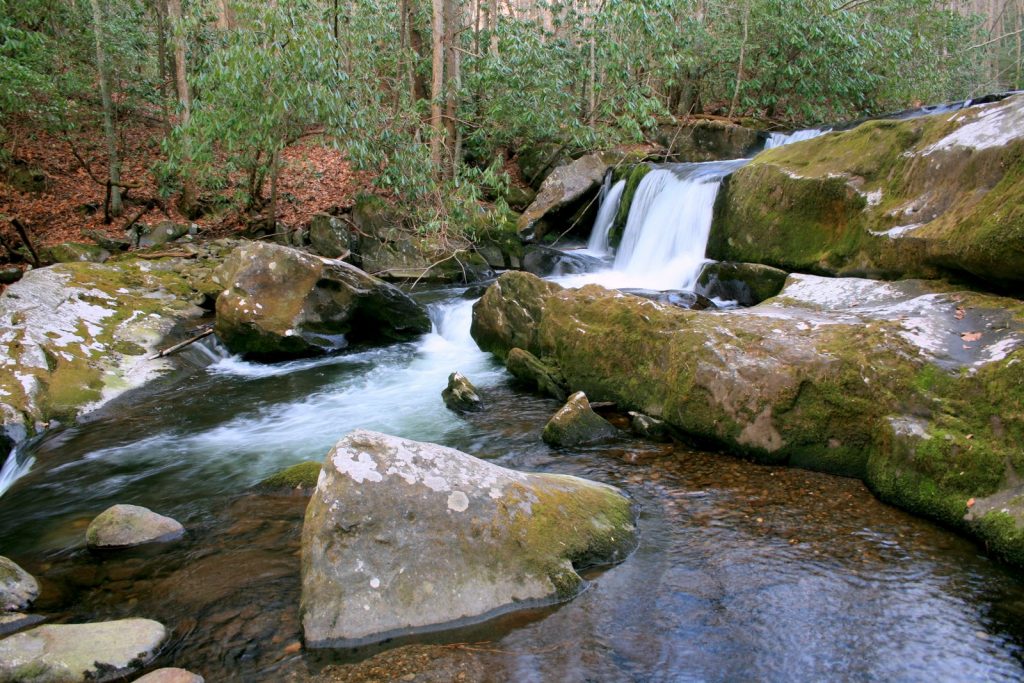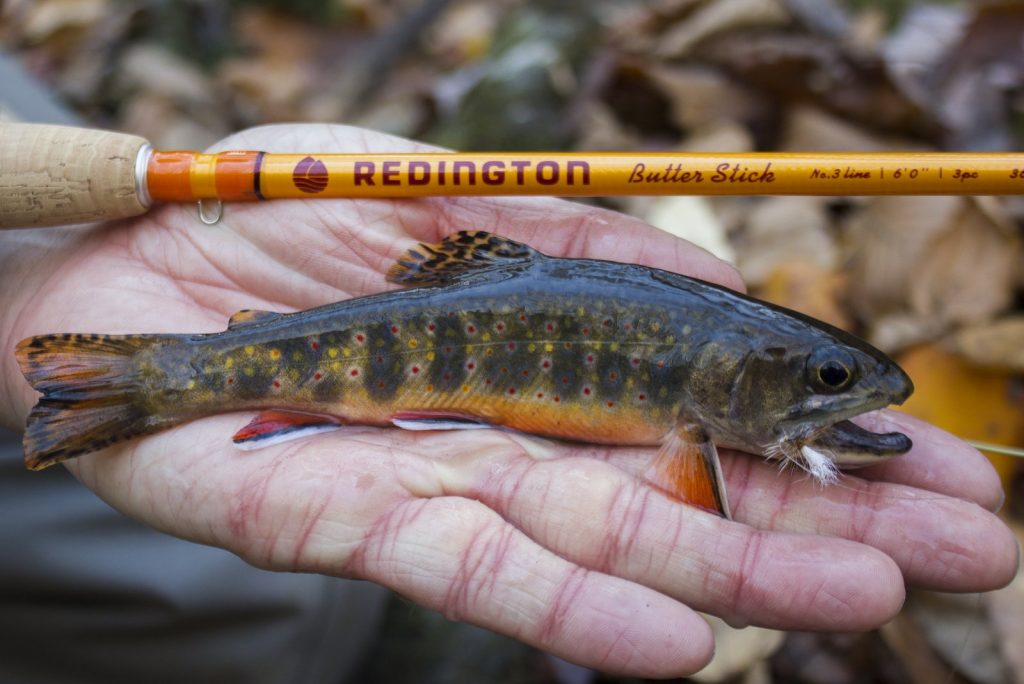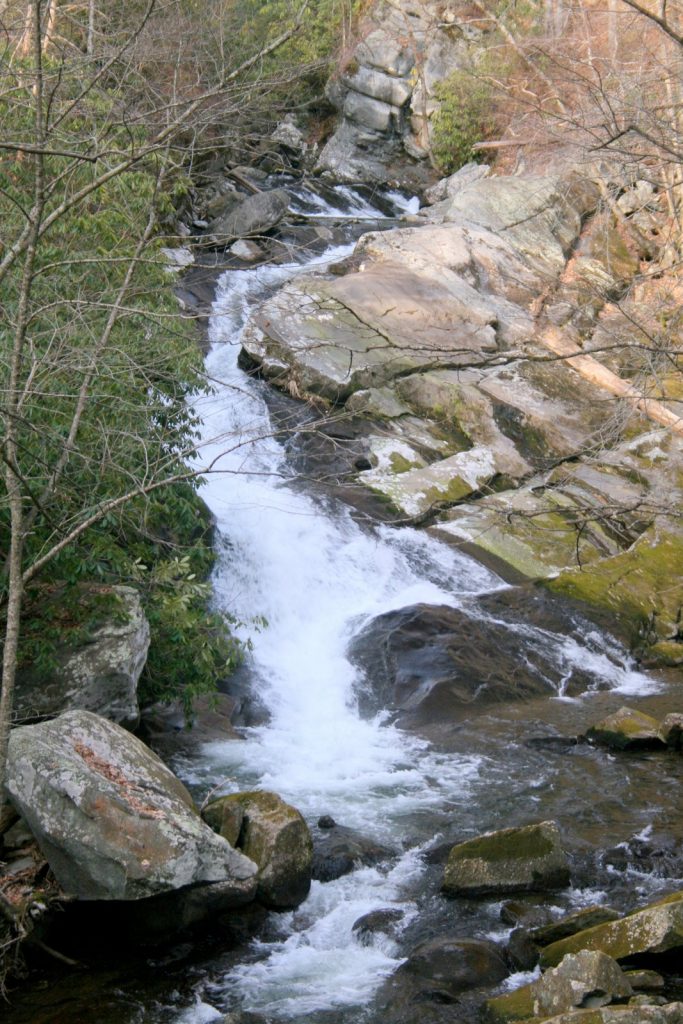One of the best brook trout streams in the Great Smoky Mountains National Park is Lynn Camp Prong. This fine mid elevation stream is one of the newest brook trout restoration projects. Closed to fishing beginning in 2008, this stream underwent an extensive process to remove non-native rainbow trout and restock southern Appalachian strain brook trout. As a result, Lynn Camp Prong now has the potential to produce large brook trout by Park standards. In addition, it is one of the most beautiful streams in the Park. We consider this a must fish stream for these reasons.

Plunge pools are great habitat for brook trout. ©2011 David Knapp Photography
Lynn Camp Prong History
The Middle Prong of Little River was settled in the late 1850s. These early settlements did not pose a threat to the headwaters of Lynn Camp and Thunderhead Prongs. However, large scale logging would come to the Middle Prong drainage in the 1920s. Consequently, vast changes came to the landscape. Railroads and logging towns would push into the headwaters of these streams. The Great Smoky Mountains National Park was formed in 1934. Unfortunately, logging would continue in and around Middle Prong through 1938 because of agreements with the existing lumber companies.
Along with logging came the stocking of non-native trout species like rainbow and brown trout. The changes in their environment and competition from non-native species was too much for the brook trout. Before long, these special fish could no longer survive in much of their historic range. Driven to the highest headwater streams, brook trout were soon rare.
Fast forward to 2007 and we find the National Park Service fisheries biologists finalizing plans to restore Lynn Camp Prong with native brook trout. The restoration project began in 2008. Some bumps along the way included illegal stocking of hatchery rainbow trout. This required treating the stream again. Lynn Camp Prong finally opened again to fishing in 2014.
This is an unusual restoration project because of the size of the stream. Being a mid elevation stream means that Lynn Camp Prong has the food base and water quality to grow larger fish than most other brook trout streams in the Great Smoky Mountains National Park. Chances at a Smoky Mountain trophy brook trout of 12 inches or better brings anglers from all over.
Fishing Lynn Camp Prong
One of the best things about fishing for brook trout is their willingness to rise to a dry fly. Their aggressiveness also makes fishing small streamers (#8-#14) a viable option. Our favorite and recommended method is to fish a dry fly with a small nymph as a dropper. This is one of the most effective ways to fish in the Smokies since it covers your bases.

A Lynn Camp Prong brook trout on a dry fly. ©2016 Nathan Stanaway, used by permission
Brook trout prefer to hold in all areas of a pool, but seem to have a preference for the slower sections. Look in tailouts and back eddies in particular when you are fishing Lynn Camp Prong. Those deep plunge pools look fishy, but in our experience may not fish as well as the shallow tailouts.
Backcountry Brookies on YouTube
To find brook trout will require a short walk. The brook trout fishing begins just upstream of the Lynn Camp Prong Cascades. A short walk upstream from the parking lot will put you into good brook trout water. Make sure you take the right trail though. When you cross the bridge above the parking lot, the trail immediately splits. The trail to the right goes up Thunderhead Prong while the trail to the left follows Lynn Camp Prong. Walking no more than a half mile up the Lynn Camp Prong trail will put you above the cascades. The fishing gets even better as you walk farther, but we recommend deep backcountry treks to only happen when fishing with a buddy.

The Cascades on Lynn Camp Prong. ©2011 David Knapp Photography
